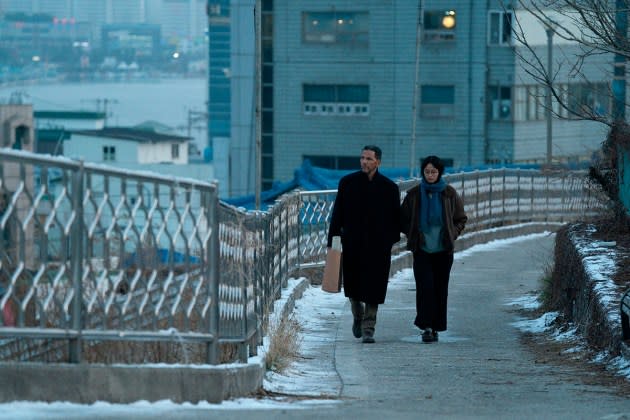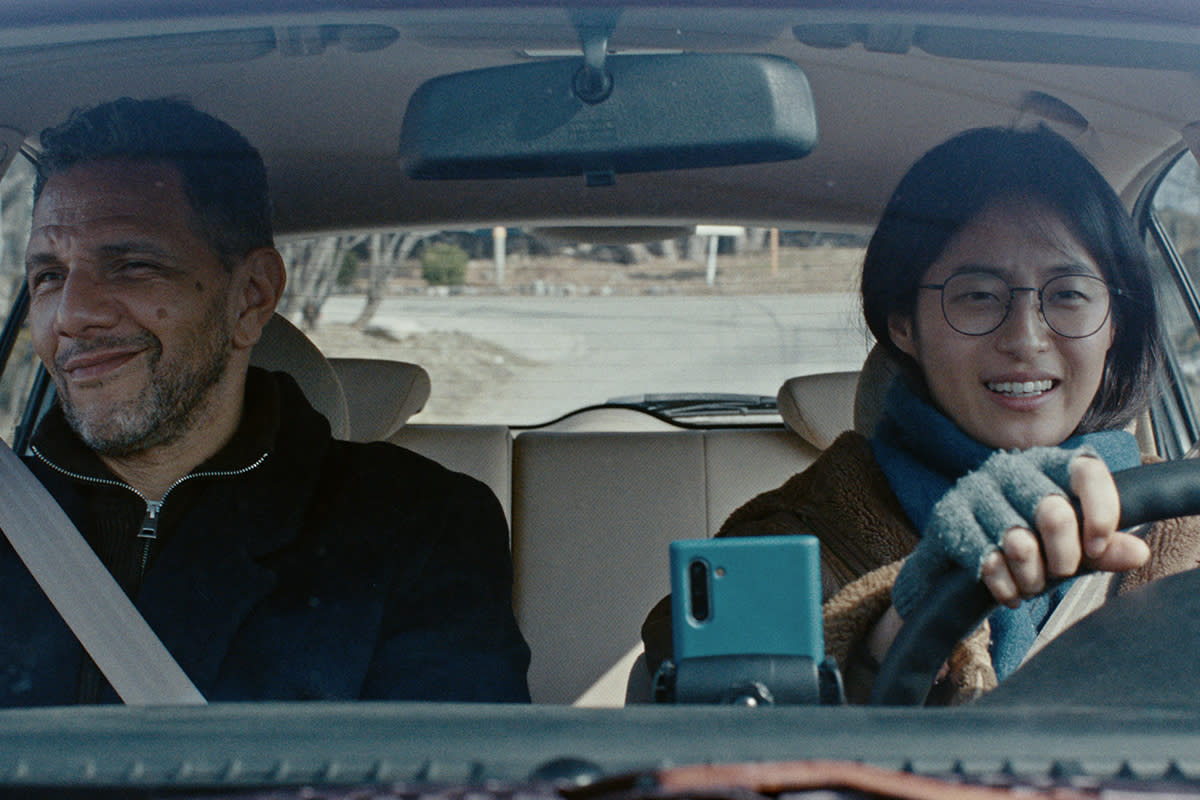Koya Kamura’s Toronto Premiere ‘Winter in Sokcho’: A Dance Between Art and Isolation

The quiet rhythms of life are upended in Koya Kamura’s debut, bound for the Toronto Film Festival’s prestigious Platform program. Set in the wintry seaside town of Sokcho, South Korea, the film, an adaptation of Elisa Shua Dusapin’s novel, captures the delicate unraveling of a young woman’s search for identity and the complexities of human connection.
Soo-ha, portrayed by newcomer Bella Kim, leads a tranquil yet bleak existence, her days spent working at a modest guesthouse in the off-season. But her carefully constructed routine is disrupted with the arrival of Yan Kerrand, a French artist of some renown, played by Roschdy Zem (“The Innocent”).
More from Variety
Kerrand’s arrival is more than just the introduction of a foreign guest; it is the catalyst for Soo-ha to confront the unresolved shadows of her past. They are both searching but for different things, are both in the same place but in different roles: he the artist, she the subject, she the resident and he the tourist. Abandoned by her French father before she was born, Soo-ha’s encounter with Kerrand sprouts emotions and questions long buried. Kerrand, on the other hand, is a man in search of new inspiration, a muse to reignite his creative flame.
Kamura seamlessly blends Agnès Patron’s animation — celebrated for her César-winning short “And Then The Bear” — with live action to reveal the characters’ internal struggles, using this animated approach to avoid the pitfalls of voiceover narration. “Very early in the process, I wanted to inject these abstracted animation sequences,” he explained. “To me, they are like windows into Soo-ha’s mind, offering the audience a glimpse of her thoughts and raw emotions.”
Produced by Offshore and Keystone Films, the film’s international sales will be handled by Be For Films. Following its premiere in Toronto, the film is set to close out the New Directors strand at San Sebastian.Variety caught up with Kamura before the film’s Toronto bow:
Choosing what story to tell for a debut is hard. What drew you to the novel and wanting to adapt it for the screen?
I was struggling writing my first feature film called “Évaporés” that talks about a father that leaves his life behind him, abandoning family and friends. So when I read Elisa Shua Dusapin’s book “Winter in Sokcho” where we follow this young woman who never knew her father, I was captivated and I felt connected to this question of identity. As I read the book, I could see the pictures in my head. I became obsessed with this character. Fabrice Préel Cléach, the producer of my previous short films, also loved the book so we started working on this adaptation.
What was your process in casting these actors, and how did you work with them to develop their story?
Casting the actors was a real challenge. First, Roschdy is an A-list actor and as it’s my first film and I’m a nobody, it was really unlikely that he would accept to do it. Yet, he loved the script, and our first meeting went well enough so he ended up doing it ! I couldn’t believe it. As for the role of Soo-ha, it was really challenging. I needed a very specific profile. Ideally half -French, half-Korean, speaking Korean fluently, but also with a very good level of French. I also need her to be quite tall as it was important to me that she would be a bit different from most Korean girls. So I only had a few options. Bella Kim was amazing when I first met her, but she had never played in anything, no feature, no short, nor theater, nothing. So we worked for about three months with a coach before we actually confirmed her. She was making so much progress in such little time, she really was impressive.

What personal connections, if any, do you have to the story or setting of “Winter in Sokcho”? How did this connection influence your direction?
I was born and raised in Paris from a French mother and a Japanese father. So because of how I looked, in France I was often considered “the Chinese kid”. And when I lived in Japan, later on, no Japanese would ever think of me as Japanese either. And I‘m just talking about the way I look here, but the same split identity extends on many other levels. The language I speak, the food I eat, the culture I like. I’m still working now on accepting that I don’t need to be validated as French nor Japanese, but that I can be something else.
You have a background in commercials and at Disney. What does that grounding give you as a filmmaker?
Before I did my first short film “Homesick” in 2019, I used to direct commercials for Disney and other companies so I was pretty used to being on a set surrounded by a team and technical equipment. So when I shot my first film, the set was almost a formality to me which helped me focus on things that really scared me such as how can I hold my storyline all along, how can I work with actors etc.
The ethics of an artist taking inspiration from a “stranger” is looked at here through their relationship. How do you view the tension between an artist’s need to draw inspiration from others and the potential intrusion on personal intimacy or connection that can result from it?
Yes, this ethical question is very important to me as I’ve been through this interrogation before when I shot “Homesick” in the Fukushima area, surrounded by refugees of the nuclear catastrophe. If I tried my best to hear their story and tried to tell it without betraying them, I can’t help myself thinking that in the end, I’m the winner in the operation. That’s why one of the traits that define Kerrand is egoism. He also takes much more from Soo-ha than he gives back.
Best of Variety
Sign up for Variety's Newsletter. For the latest news, follow us on Facebook, Twitter, and Instagram.
